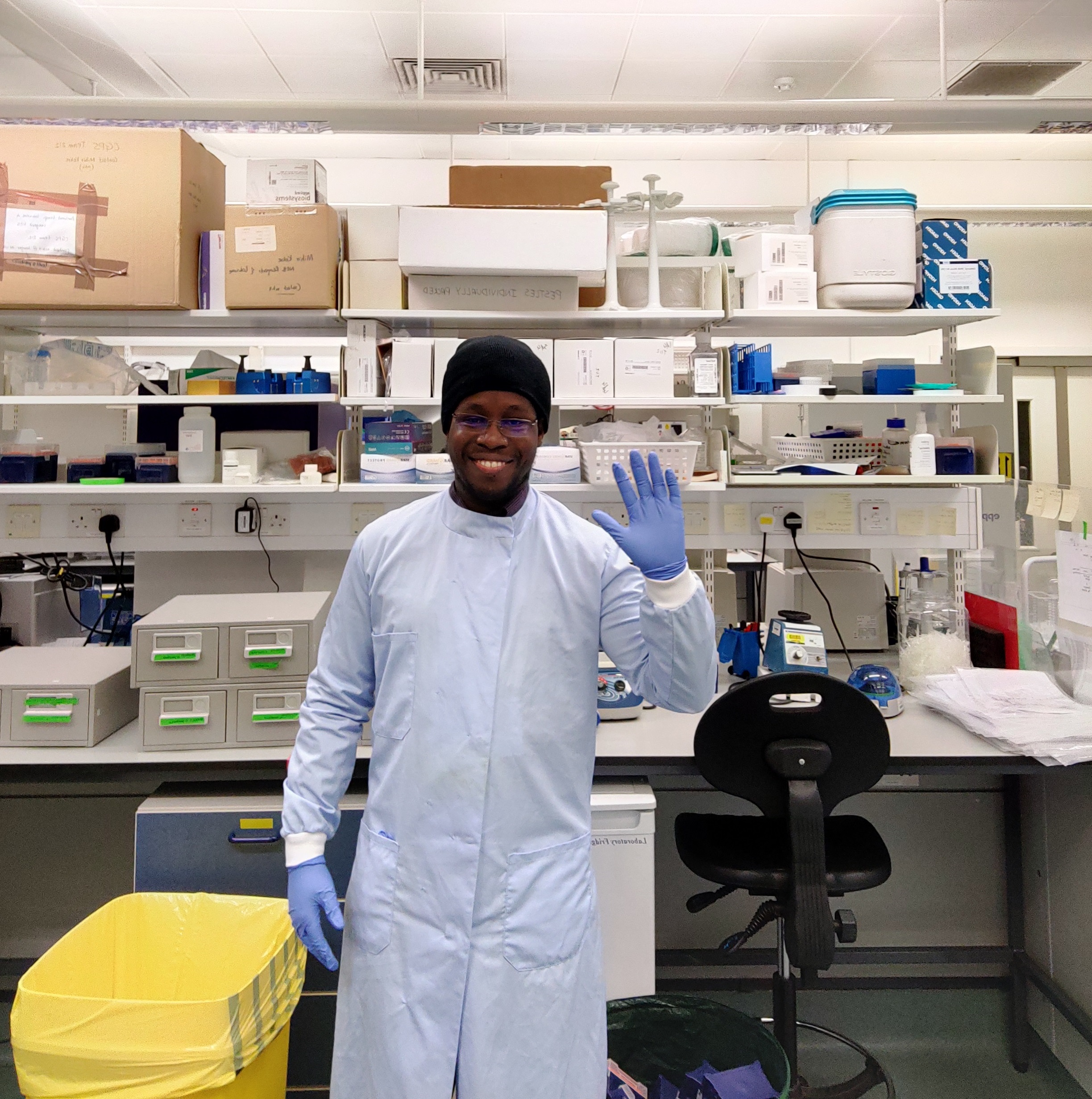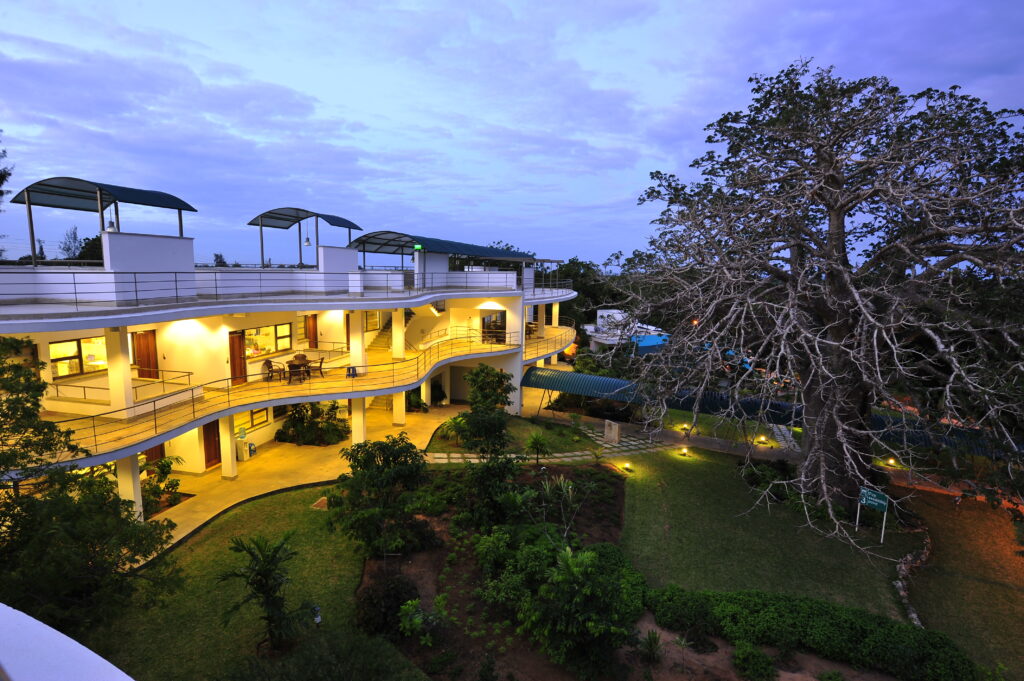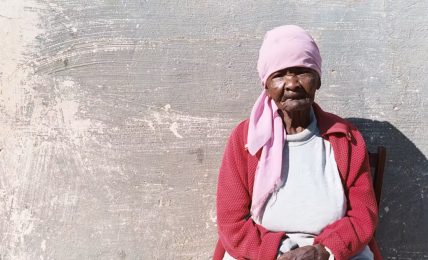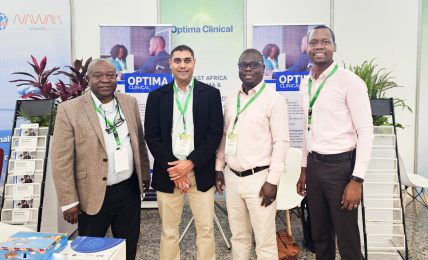IDeAL — How KEMRI-Wellcome Builds Science Capacity in Africa
A new breed of scientists is rapidly springing up on the continent. A young, vibrant, and practical breed, eager to stamp their mark on the global landscape.

A new breed of scientists is rapidly springing up on the continent. A young, vibrant, and practical breed, eager to stamp their mark on the global landscape.

I arrived in Kilifi at the break of dawn on the midnight bus from Nairobi. In the final moments of the trip, as the bus crossed the Kilifi Bridge — the longest bridge in the country — I caught a grand mural of colours as the sun reached above the ocean to claim the skies, displaying shades as radiant and as varied as those that enliven the kanga. I disembarked to clean morning air rushing into my lungs, rekindling my spirits, and I was greeted by a warm coastal breeze, the distant whispers of the ocean, and the mellifluence of a Kiswahili that remains unmarred by the sheng I had left behind in Nairobi.
I had just resigned from 15-hour working days as a lab technician in another rural town: my first job after my undergraduate degree in Microbiology and Biotechnology. As I worked at that nursing home, a 3-inch mattress lain on the floor had been my bed, in a $10 per month mud-house that had neither a toilet nor fresh tap water. Upon receiving an email informing me of a successful postgraduate diploma (PGD) interview, I leisurely typed up a resignation letter and bolted to Kilifi. That letter remains the most blissful one that I have ever written.
Kilifi, a tranquil town along Kenya’s coastline, takes its name from the cliff, the kilifi, which abuts its famous creek. Its ambient temperatures average at 27.5 °C, an ideal complement to its hidden white sand paradise. This little-known town is often ignored by vain Instagram travellers addicted to the thrills of Mombasa and Malindi. It appears cut off from the world, with no malls, no highways, and no skyscrapers, yet it is, on occasion, the preferred vacation spot for adventurers no longer enamoured by typical tourism destinations. Here lies a unique coastal experience, a mythical beauty to be visited by strangers only infrequently, but it was neither the sandy paradise nor the majestic ocean that lured me to Kilifi. It was something else: the allure of a scholarship programme, the promise of starting my life anew.
Kilifi is home to the KEMRI–Wellcome Trust Research Programme (KEMRI–Wellcome), a partnership between the Kenya Medical Research Institute (KEMRI), a premier research institute in Kenya, and the Wellcome Trust, one of the largest charitable foundations in the world. The KEMRI Centre for Geographic Medical Research (Coast) — CGMR (C), located in a hilly part of Kilifi, hosts this strategic partnership which has lasted for more than 3 decades.
As you pass through the gates of KEMRI-Wellcome, the pavements descend steeply, drawing you in with every step. The green landscape seems undisturbed by the structures it contains, giving you the impression that the Institute was constructed with deliberate care not to disturb the undulations of the land. Unfortunately for a visitor, the large trees and the craggy landscape do not allow one to see the whole Institute in one swoop, not even when you stand at its highest point — on the rooftops of the beautifully designed IDeAL training building. However, from that spot, at least, you can see the thin sliver of the blue sea in the horizon, sandwiched between the coastal trees and the sky.

The lowest part of the Institute borders Kilifi County Hospital. The long-lasting collaboration between this hospital and KEMRI–Wellcome has yielded one of the best regional health and demographics surveillance systems in the country, one that has been deployed extensively in defining the prevalence of chronic diseases (e.g. epilepsy), mapping the incidence of childhood infectious diseases (e.g. pneumococcal disease and rotavirus diarrhoea), evaluating health care access in local communities and assessing the operational effectiveness of major public health interventions (e.g. vaccines).
I often felt excited wandering the KEMRI–Wellcome Institute, taking it in. But I also felt a little lost, like a young man taking his first steps away from the shelter of his father’s house. I wondered why every rung on the academic ladder seemed to draw me farther and farther away from home. As a young boy, two kilometres was the farthest I needed to set out to get to school, but for my high school tutelage, I was escorted almost 300 kilometres away. For an undergraduate education, an extra 30 kilometres was demanded, and then for my PGD, I had to yield another 900 kilometres away from home. The more I yearned to learn, the further I had to stray away from home. However, the longer I lingered in Kilifi, the more I fell in love with it. I soon accepted that Kilifi was meant for me.
Kilifi offers its dwellers a rich, pure and healthy lifestyle. First, because of the sweet breeze and the pleasant temperatures outside, my neighbours always had dinner sitting in their gardens, with the tapestry of the Milky Way galaxy unfolded above their heads. I must add that they were without exception the nicest people with whom I have ever dined. Second, it is only in Kilifi that I can have a morning run along a deserted equatorial beach, then spend a few illustrious hours at an excellent Research Institute, and before the afternoon is over, have the luxury of attending a book club meeting at an ancient archaeological site, and top it all with an evening swim in the cool ocean waters and a stroll to the local pub for a few pints of palm wine, freshly brewed by the fellows next door. It was also hardly unusual to stumble into a heated debate at the pub, not about politics but about Nietzsche, the multiverse or viruses. You would not be mistaken if you assumed that this leafy paradise was designed not for the indulgence of tourists but for the peace and tranquillity of scholars.
Some evenings, as the twilight decayed into night and my acquaintances sauntered to cup other pleasures of a coastal town, I would call a friend for a game of chess within the luxurious comforts of a hotel perched at the ocean’s edge, while savouring Swahili cuisines and downing cold bottles of Tusker. Some days we laid the chessboard at the feet of young lovers swaying in each other’s arms to the golden melodies of Bango, albeit to inquisitive stares. Chess is my favourite indulgence, and no matter the place or the time, the travesties or the joys, I shall always relish the feeling of watching opponents suffer defeat by my hand.
My PGD was in health research methods, funded by a scholarship awarded by the Initiative to Develop African Research Leaders (IDeAL). I was enrolled at both KEMRI–Wellcome and Pwani University: the accrediting institution collaborating with IDeAL. Pwani is fast-growing university, and its relationship with the local Research Institute is accelerating its transformation into a national centre for health research.
The IDeAL programme emerged in 2015 to actualize a long-held dream of transforming lives in Africa through science. Currently, Africa accounts for a meagre 1.3% of the global investment in research and development (R&D) and less than 1% of the global research output, despite having 15% of the world’s population. According to the 2015 UNESCO Science Report, Africa also has a dismal 198 researchers per million inhabitants, against the global average of 1,150. To bridge this gap, the African Academy of Sciences (AAS) estimates that Africa must train at least one million new PhDs. This requires a multi-lateral investment strategy directed towards developing research infrastructure and fostering career development in the sciences.
In the earliest phases of the capacity-building endeavour at KEMRI-Wellcome, pioneering local scientists and international partners started by leveraging on individual grants to develop core structures. This involved, from 1989 to 2008, the construction of laboratory, computational, clinical and field infrastructures, leading to the emergence of an island of scientific excellence at the Kenyan coast, and an influx of young minds keen to pivot into research.
To meet this need, these pioneers bid for and received the generous Wellcome Trust’s Strategic Award, 12 million pounds worth, through the Wellcome Trust’s Scientific Funding activity. This funding was made available in 2008 across multiple grant types, but some of it was also deployed to support training activities at masters and post-doctoral levels. The key benefit of this strategic award was that it sustained long-term research and training activities, a task that small individual grants cannot accomplish. The Kilifi programme therefore experienced a remarkable expansion during this period, both in student enrolment and in research output. From 2008 to 2015, at least 52 students received support to undertake their PhDs, and nearly twice as many received support for masters training. Research supported by the Strategic Award yielded over 300 peer-reviewed publications, half of which are first-author papers by students. Currently, almost 40 of these fellows have progressed in their careers to Postdoctoral level. The Strategic Award, without a doubt, laid the foundation of the age that was soon to come.
As KEMRI–Wellcome bolstered its local research activities, the African Academy of Sciences set its sights on the big picture. It created the Alliance for Accelerating Excellence in Science in Africa (AESA), whose mission was to mobilize and fund the best scientific research and innovation activities across the continent. To do this, AESA (with the support of the Wellcome Trust, the UK’s Department for International Development and the New Partnership for Africa’s Development (NEPAD)) deployed the Developing Excellence in Leadership, Training And Science (DELTAS) Africa, a US$100 million programme. This funding was the largest of its kind, and it was channelled towards 11 collaborative teams all across the continent. One of these teams is IDeAL.
IDeAL is one of the largest of the DELTAs teams, having attracted at least a US$ 11 million in its first round of funding. Its vision, ‘African-led research solving African and global health issues’, could not be more relevant when I joined the PGD programme in 2017, and it remains just as relevant as the continent faces unique challenges during the Covid-19 pandemic. Leveraging on the success of the Strategic Award, IDeAL seeks to attract young minds to research, to train them into emerging research leaders and to incentivise their retention within the African continent by supporting their transition into research careers. IDeAL’s research agenda also cuts across both qualitative and quantitative disciplines and students can specialize in immunology, genetics, bacteriology, genomics, virology, epidemiology, health economics or even nutrition and the social sciences. For my postgraduate diploma, my focus was the development of novel spectroscopic tools for the detection of malaria parasites: a technique that was postured to revolutionize the field of malaria vector surveillance.
As a PGD student, I enjoyed my liberties with wanton abandon. Each Monday morning seminar, I endeavoured to sit at my favourite spot in the training building’s conference centre. I regarded every session as a news update about the foremost research on the continent, and I felt very privileged that every single session was completely free of charge. The Thursday seminars were even more brilliant, featuring presentations from both local and international researchers. One sunny afternoon, Prof Thumbi Ndung’u —the Programme Director for the Sub-Saharan African Network for TB/HIV research Excellence (SANTHE), another of the DELTA’s programmes — delivered my most memorable seminar of them all, discussing his search for a HIV vaccine. Ndung’u, an eloquent and pleasant man, was once a mentor to Prof Sam Kinyanjui: the current Head of Training and Capacity Building at the KEMRI-Wellcome and the Director for the IDeAL programme.
Unlike during my undergraduate training, IDeAL commanded us to learn not by rote but by praxis. It taught us to love the travails that a scientist must endure in the service of society. As Amos Oz instructs in his novel A Tale of Love and Darkness, “Success flows from perspiration, and inspiration from diligence and effort.” This was the unwritten mantra of the IDeAL programme.
IDeAL houses almost all scholars of every level in the same building. On the first floor, next to the PGD students, sit the Masters students, and not far away is an assembly of post-doctoral fellows on both the ground and the first floors. The training building also hosts a large computer room and an extensible seminar room, sufficient to host both casual conversations, conferences and training sessions. The offices of the IDeAL team are also right next to the students. Any enterprising student merely needs to overcome their shyness and knock on any door to enjoy expert instruction — or if he or she wishes, mentorship as well — from an assortment of seniors.
Both as an IDeAL PGD student and later as a KEMRI–Wellcome Research Assistant, I adored the laboratories at the Kilifi site. From their entrances, rank upon rank of well-ordered lab-books, chemical reagents, sample boxes and an assortment of other items populated every shelf and every rack. On the benches and workstations, centrifuges, shakers and vortex machines were always spinning and humming, mostly to the steady beat of research deadlines. The main corridor was also lined with tall ultra-cold freezers, as imposing as sculptures of an ancient religion. Only sacred hands touched these, lest precious samples thaw by accident. I marvelled at a technician detained by the urgency of their tasks, tailed by an entourage of eager interns. All around the lab, and in the sitting spaces, scientists and students forged toward the common goal of scientific discovery. I must confess that the laboratories were suited for a soul as mine that prefers a secluded life devoted to science, but within these the corridors many found love!
If you were to tap a little boy on the shoulder and ask him to pick a professor from a large crowd, he would select without any hesitation the most elderly looking person. While this guess may be true in many universities across the world, at Kilifi professors are young and agile. Prof Sam Kinyanjui, recently appointed Associate Professor at the University of Oxford, is one example. Sam is a specimen of living humour. He enjoys the company of his students and effortlessly allows knowledge gems collected over years to flow gently to students. His hilarious quips, I presume, are the gifts of an inventive mind, which has driven him to the pinnacle of health research on the continent.
Prof Philip Bejon, a high-spirited scientist who is currently the Centre Director of KEMRI–Wellcome, cycles to work and keeps his sleeves rolled up to his elbows like a man who loves to work with his hands. He walks with brisky steps and scales a flight of stairs with speed. In the seminars at KEMRI-Wellcome, Philip poses his questions in a calm and collected tone that reveals a reserved, cautious genius. Despite his position at the helm of the Institute, he keeps his feet down to earth, and comes across as a man who rarely suffers the task of accompanying a shirt with a tie.
Both Sam and Philip are beneficiaries of the Strategic Award, in one form or the other. Their exploits in both scientific research and capacity building have caused a great stir across the world. Both Philip and Sam have received the Chalmers Medal — which is awarded to researchers aged 46 and under in tropical medicine and global health — in recognition for their tremendous contribution to the building of research capacity in Africa.
Because of both KEMRI-Wellcome and IDeAL, a new breed of scientists is rapidly springing up on the continent. A young, vibrant, and practical breed, eager to stamp their mark on the global landscape. IDeAL has attracted and supported nearly 500 scholars: from high school graduates in its School Leavers Attachment Scheme (SLAS) to post-graduates and post-doctoral fellows. Currently, IDeAL has achieved a completion rate of 98% for those enrolled in its programmes, and a majority are rising up the academic ranks or advancing research careers in globally-recognized institutions. IDeAL has also nurtured research and training collaborations with nearly 60 institutions, giving its students the best exposure possible in their respective fields and turning them into global ambassadors of science.

IDeAL, like the Strategic Award before it, also boasts a large research output. In just 5 years, IDeAL students have produced over 400 peer-reviewed publications and policy documents, some which have been decisive in shaping public health practices across the world. IDeAL continues to churn out scholars each year, and deservedly, it recently received a second round of funding.

This success has not been without challenges. Firstly, Africa’s expenditure on research and development averages at 0.5% of GDP, way less than the global average of 2.2%. About 15 years ago, the African Union set a target for each nation to spend at least 1% of their GDP on research and development. Today, less than five African countries have reached this goal. Politicians on the continent must reassess their priorities and push for an increase in research and development allocation.
Secondly, Africa is still heavily dependent on international collaboration and investments. A 2010 report by Thomson Reuters indicates that of the six top research nations in Africa — Algeria, Egypt, Kenya, Nigeria, South Africa and Tunisia — none has an African country among its top five collaborating countries. Since 2010, the situation has barely changed. This makes it considerably difficult for African-led initiatives to shift the centre of gravity for African science to Africa. Our dependence on international partners continues to raise questions on our ability to drive scientific agendas that are aligned to our needs. Governments and local institutions must therefore pursue policies that promote intra-African collaborative efforts, while incentivising the continent’s private sector to donate to research and capacity building activities.
As I write this, I have recently been tasked to embark upon a fourth academic degree: a PhD at the University of Cambridge, where I have just completed my Master’s degree in Genomics. My long-term goal — like that of my peers who have emerged from IDeAL and other DELTAs teams — is to acquire a globally competitive set of skills that I can deploy, when I return home, towards closing health disparities between Africa and the rest of the world. I am deeply grateful to the scientists that preceded me and laid the foundation for generations such as mine. Meanwhile, I hope that African governments and their local private sectors will prioritize funding for scientific research.


11 Comments

Your story gives me life.
Ah, it is my pleasure!
Great news Wagah keep on keeping
Thanks Charles.
Martin an inspiration to peers and juniors.
Kudos for the impeccable words here. I wouldn’t put it any better.
Cheers to greater heights.
Cheers!
Excellent read and well articulated. The journey has jusy began, keep on…..
What an elegant essay! Thanks for telling this story, Martin, and please keep telling many more as you continue marching through the hallowed halls of scientific exploration & training. I think stories like these are very important especially in light of how our current cultural moment (global pandemic) seems to have ignited an urgency to ramp up scientific R&D on our continent. Thanks again!
1990…
The late Prof David Mwamburi of Tufts University dragged me to this nascent centre. Coffee at seven am with Prof Kevin Marsh , Norbert Peshu, Peter Winstanley and Charles Newton together with Drs Cathy Waruiru and Isaiah Mwangi going through intensive treatment of severe Paediatric malaria then criticality endemic in Kilifi was my starting point. A little prefab of offices. State of the art laboratories by any standards and critical support in social and epidemiology by Bob Snow & Foster Dayo
Kilifi migrated from cashew nuts to serious medical science